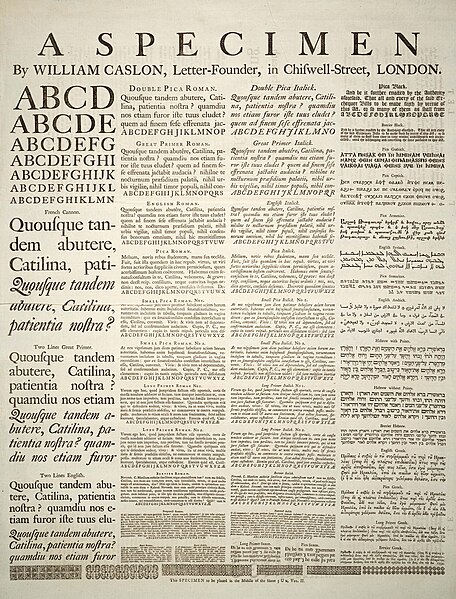Typesetting is the composition of text for publication, display, or distribution by means of arranging physical type in mechanical systems or glyphs in digital systems representing characters. Stored types are retrieved and ordered according to a language's orthography for visual display. Typesetting requires one or more fonts.
One significant effect of typesetting was that authorship of works could be spotted more easily, making it difficult for copiers who have not gained permission.
Movable type on a composing stick on a type case
A specimen sheet issued by William Caslon, letter founder, from the 1728 edition of Cyclopaedia
Linotype CRTronic 360 photosetter, a direct entry machine
Mural mosaic "Typesetter" at John A. Prior Health Sciences Library in Ohio
A written language is the representation of a language by means of writing. This involves the use of visual symbols, known as graphemes, to represent linguistic units such as phonemes, syllables, morphemes, or words. However, written language is not merely spoken or signed language written down, though it can approximate that. Instead, it is a separate system with its own norms, structures, and stylistic conventions, and it often evolves differently than its corresponding spoken or signed language.
A Specimen of typeset fonts and languages, by William Caslon, letter founder; from the 1728 Cyclopaedia.
A clay tablet with cuneiform writing.





